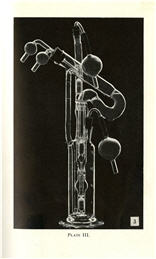ExhibitionBoundary Crossing / 1931
- Perfusion pump assembly, 1938
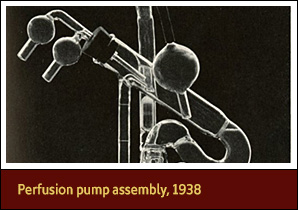
Perfusion pump assembly from The Culture of Organs, 1938
Authors: Alexis Carrel (1873–1944) and Charles A. Lindbergh (1902–1974)
Photographers: Louis Schmidt (ca. 1866–1939) and Joseph B. Haulenbeek
Courtesy National Library of Medicine
By 1935, using a perfusion pump, Alexis Carrel and Charles Lindbergh had sustained a variety of animal organs—hearts, kidneys, ovaries, spleens—in the germ-free Pyrex glass pump, but they did not use human tissues.
- Experiment 13T…, 1938
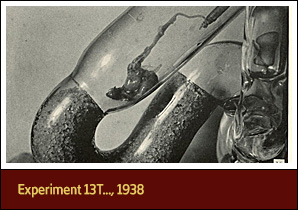
Experiment 13T. Ovary, Fallopian tube, ovarian artery, and segment of aorta of a cat. Tissues spread on wall of organ chamber, instead of holder from The Culture of Organs, 1938
Authors: Alexis Carrel (1873–1944) and Charles A. Lindbergh (1902–1974)
Courtesy National Library of Medicine
The perfusion pump described in Alexis Carrel and Charles Lindbergh’s book was supposed to keep a sterile pulsing circulation of nutrient-rich fluid through organs.
- Interior of incubator with three perfusion pumps…, 1938
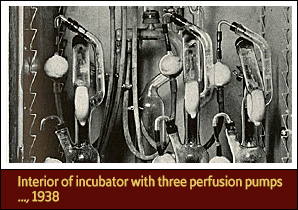
Interior of incubator with three perfusion pumps in operation from The Culture of Organs, 1938
Authors: Alexis Carrel (1873–1944) and Charles A. Lindbergh (1902–1974)
Courtesy National Library of Medicine
Scientist Alexis Carrel devised a fluid rich in nutrients that was capable of sustaining the cells of organs. However, Carrel did not have the technology to perfuse the cells in the fluid. Aviator Charles Lindberg collaborated with Carrel and created a glass apparatus that could bathe the organs in the fluid.
- Cross section of perfusion pump assembly…, 1938
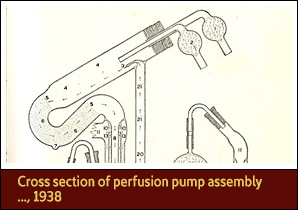
Cross section of perfusion pump assembly from The Culture of Organs, 1938
Authors: Alexis Carrel (1873–1944) and Charles A. Lindbergh (1902–1974)
Courtesy National Library of Medicine
Charles Lindberg drew designs for the perfusion pump, a device capable of maintaining organs outside the body. After a five-year collaboration, the device kept alive small animal organs for three weeks.







